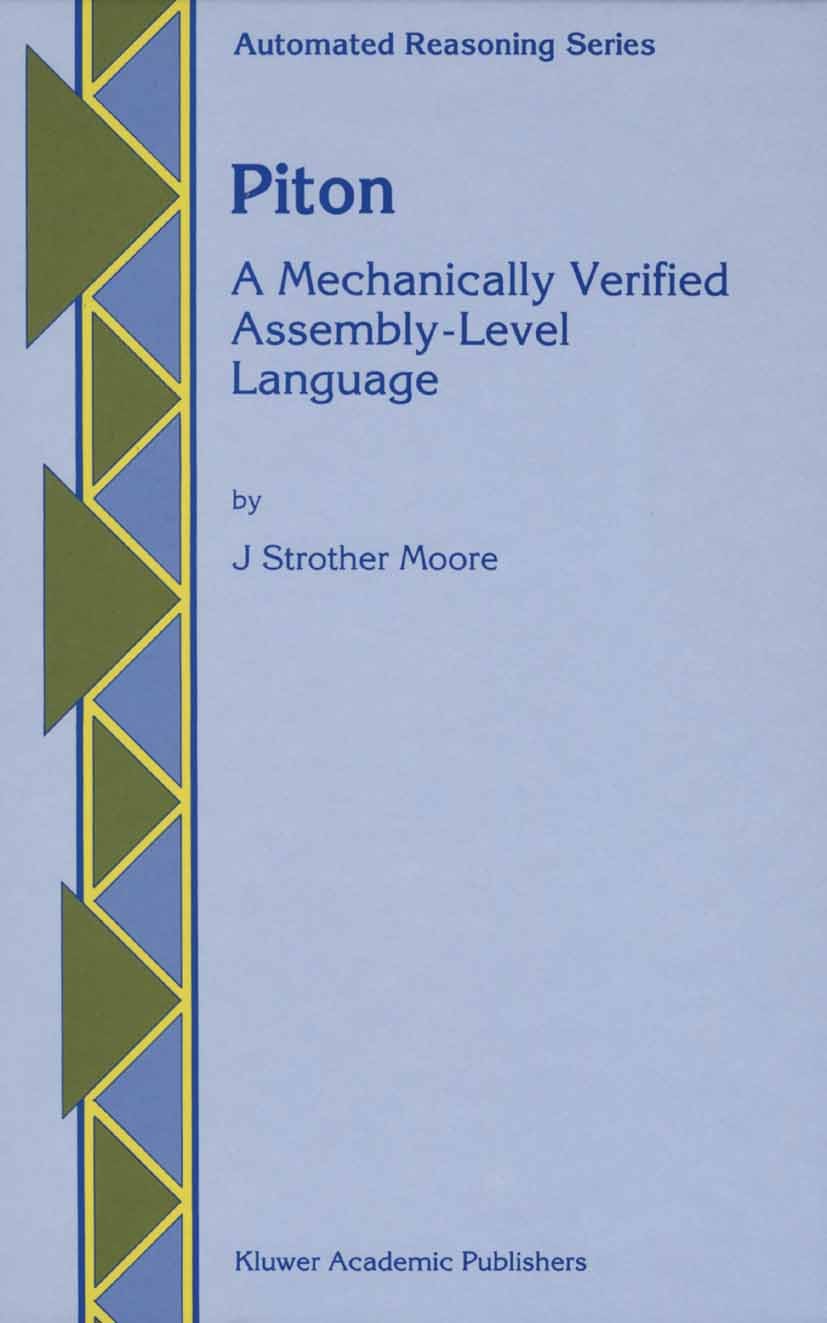| 书目名称 | Piton | | 副标题 | A Mechanically Verif | | 编辑 | J Strother Moore | | 视频video | http://file.papertrans.cn/749/748132/748132.mp4 | | 丛书名称 | Automated Reasoning Series | | 图书封面 |  | | 描述 | Mountaineers use pitons to protect themselves from falls. The lead climber wears a harness to which a rope is tied. As the climber ascends, the rope is paid out by a partner on the ground. As described thus far, the climber receives no protection from the rope or the partner. However, the climber generally carries several spike-like pitons and stops when possible to drive one into a small crack or crevice in the rock face. After climbing just above the piton, the climber clips the rope to the piton, using slings and carabiners. A subsequent fall would result in the climber hanging from the piton—if the piton stays in the rock, the slings and carabiners do not fail, the rope does not break, the partner is holding the rope taut and secure, and the climber had not climbed too high above the piton before falling. The climber‘s safety clearly depends on all of the components of the system. But the piton is distinguished because it connects the natural to the artificial. In 1987 I designed an assembly-level language for Warren Hunt‘s FM8501 verified microprocessor. I wanted the language to be conveniently used as the object code produced by verified compilers. Thus, I envisioned the lang | | 出版日期 | Book 1996 | | 关键词 | Mathematica; addition; compiler; data types; logic; microprocessor; programming; programming language; proof | | 版次 | 1 | | doi | https://doi.org/10.1007/978-0-585-33654-1 | | isbn_softcover | 978-94-017-3791-3 | | isbn_ebook | 978-0-585-33654-1Series ISSN 0927-1023 | | issn_series | 0927-1023 | | copyright | Springer Science+Business Media Dordrecht 1996 |
The information of publication is updating

|
|
 |Archiver|手机版|小黑屋|
派博传思国际
( 京公网安备110108008328)
GMT+8, 2025-12-14 23:34
|Archiver|手机版|小黑屋|
派博传思国际
( 京公网安备110108008328)
GMT+8, 2025-12-14 23:34


